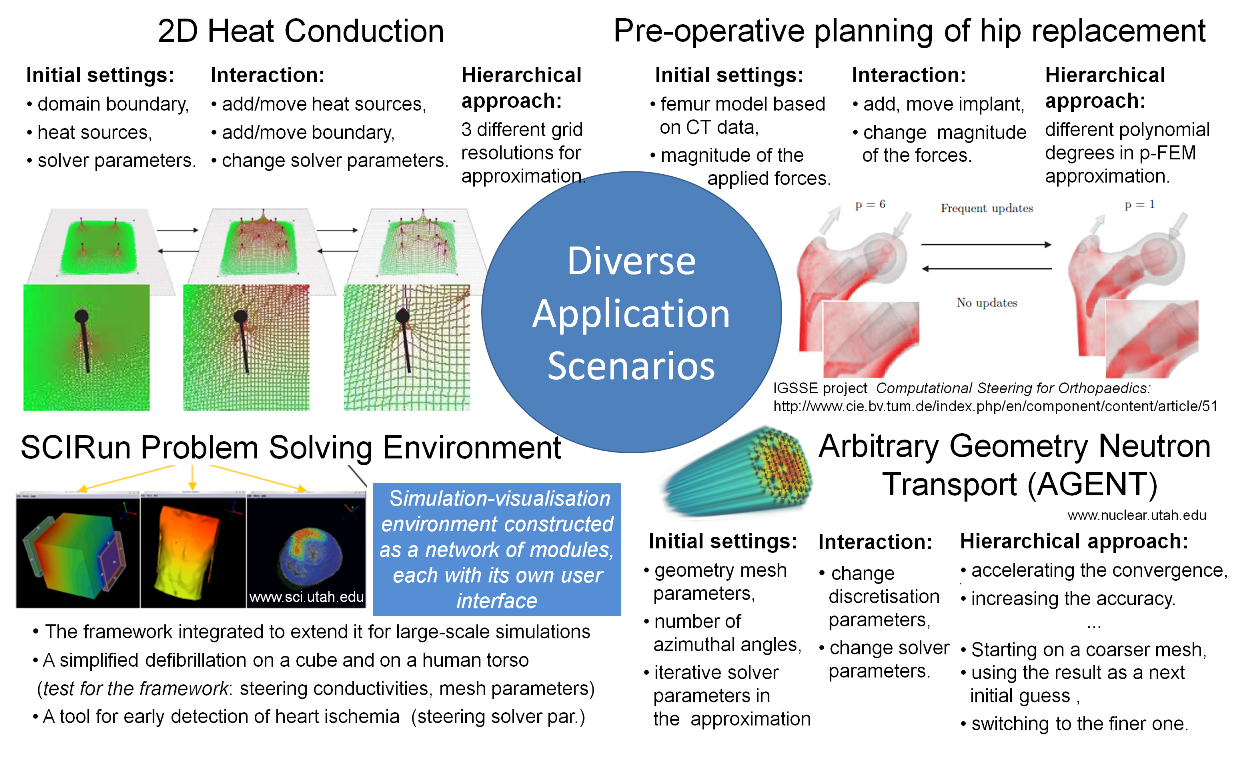A High-performance Computational Steering Framework for Engineering Applications
| Project team leader | Dr.rer.nat. Ralf-Peter Mundani Prof. Dr. rer.nat. Ernst Rank |
| PhD students | Jovana Knežević, MSc |
| Part of the project |
A Scalable Infrastructure for Computational Steering (MAC-IGSSE) |
Project description
To fully harness the potential of advanced computing technologies, the efficient and timely analysis of huge amounts of data is essential as are front-line simulations. To optimise this process, experts and their capabilities need to take a central role in the analysis and to be supported by appropriate tools that do the complex work in the background to interactively guide the exploration process.
The main challenge is to seamlessly feed the user requirements back into the simulation so that it can be steered towards optimum performance. Current attempts to achieve this have resulted in the insertion of check- and break-points at fixed places in the simulation code. Depending on the size of the problem, this can still compromise the benefits of the decoupled steering-data processing and the exchange between simulation and visualisation.
To leverage the concept for a broader scope of applications, it is essential that the user receives an immediate response from the simulation to his or her changes. Our generic integration framework, targeted to the needs of the engineering domain, supports distributed computation as well as on-the-fly visualisation in order to reduce latency and enable a high degree of interactivity with only minor code changes. In order to achieve this goal, the regular course of the simulation coupled to our framework is in-terrupted in small, cyclic intervals followed by a check for updates. When new data is received, the simulation re-starts automatically with the updated settings (boundary conditions, simulation parameters, etc.). To obtain rapid, albeit approximate feedback from the simulation in the case of perpetual user interaction, a multi-hierarchical approach is advantageous. In addition, we tackle the problem of long communication delays caused by huge data quantities which can hinder the user in exploring the effect of his interaction.
 More: http://www.mac.tum.de/wiki/index.php/Project_B8
More: http://www.mac.tum.de/wiki/index.php/Project_B8
References
Knežević, J., Frisch, J., Mundani, R.-P. and Rank, E. 2011. Interactive computing framework for engineering applications. In J. Comput. Sci., 7(5), pp. 591-599.
Knežević, J., Mundani and R.-P., Rank, E., 2011. Interac-tive Computing−Virtual Planning of Hip Joint Surgeries with Real-Time Structure Simulations. In International Journal of Modeling and Optimization, 1(4), pp. 308-313.
J. Knežević, R.-P. Mundani, E. Rank, A. Khan, C. R. Johnson: Extending the SCIRun Problem Solving Environment to Large-Scale Applications. In: Proc. of Applied Computing, pp. 171-178., Madrid, 2012.
J. Knežević, R.-P. Mundani, H. Hernandez, T. Fogal, T. Jevremovic, E. Rank: Interactive Computing in Numerical Modelling of Particle Transport Methods. In: Proc. of the IADIS Multi Conference on Computer Science and Information Systems - “Theory and Practice in Modern Computing”, pp. 79-84., Lisbon, 2012.